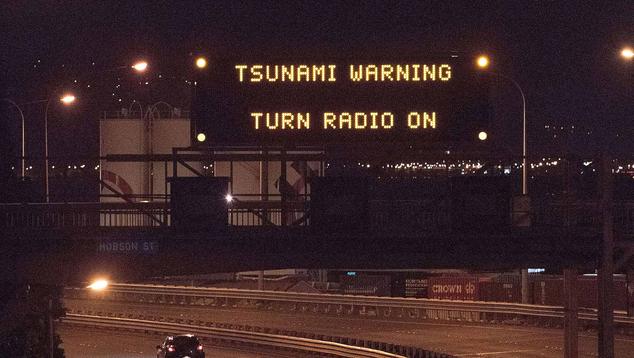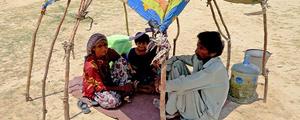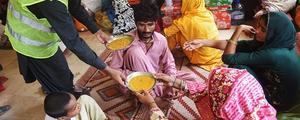LONDON -- Receiving an early warning before a disaster occurs can mean the difference between life and death. But new data from the 2024 Lloyd’s Register Foundation World Risk Poll Resilience Report show the world isn’t any better at getting these messages to people than it was a few years ago.
The majority (70%) of people surveyed globally in 2023 who have experienced a disaster in the past five years reported receiving at least one form of early warning before it struck, but three in 10 received no warning.
Even though most people who experience a disaster are warned beforehand, these data illustrate there is still a long way to go to achieve the U.N.’s goal of “Early Warnings for All” -- particularly as more people experience disasters. In 2023, the World Risk Poll shows that 30% of people worldwide had experienced a disaster related to a natural hazard in the past five years, up from 27% in 2021.
Wide Inequalities in Early Warning
Early warnings save lives as well as reduce economic damage to infrastructure and property. The World Risk Poll data show that the group who received no warning beforehand also scores lower on the World Risk Poll Resilience Index (50 out of 100) than people who received a warning (61 out of 100) before disaster.
The Resilience Index quantifies people’s capacity for resilience and ability to deal with adversity, based on their personal circumstances and perceptions. The overall score ranges between 0 and 100, with higher values equating to higher resilience.
There are significant inequalities in early warning at a global level between different demographic groups. People who have completed tertiary education (78%), those who live in cities (74%) and people who are more financially resilient (74%) are significantly more likely than the least educated (66%), those in rural areas (65%), and the least financially resilient (63%) to receive early warnings before disasters.
Some parts of the world are also more well-equipped with early warning systems than others. Of people who have experienced a disaster in the past five years, 90% in Eastern Asia said they received at least one early warning, alongside 86% in Australia and New Zealand, and 83% in Northern America. By contrast, 50% received an early warning in Central Asia, and fewer still received one in Central/Western Africa (38%) and Northern Africa (25%).
The low levels of early warnings received by people who experienced disasters across Africa show how much more needs to be done to help save lives and reduce harm from disasters in some parts of the world.
Growth in Digital Warnings Received Outstrips Other Forms of Early Warning
Many types of early warning systems exist. Traditional mass media -- radio, television and newspapers -- remain the most common form of early warning system worldwide. Over half (53%) of everyone globally who has experienced a disaster in the past five years received a warning from radio/television/newspapers, although this is down slightly from 56% in 2021.
In contrast, the internet and social media is the fastest-growing method of early warning system. In 2023, 46% of people who had experienced a disaster in the past five years received a warning in this way, up 10 percentage points from 2021.
This has coincided with -- although it is not solely attributable to -- the rise in internet access worldwide. In an ever-more-digital world where seven in 10 people are online, digital early warnings represent an increasingly important vehicle through which to communicate in the moments before disaster.
Mobile Phones: A Missed Opportunity?
The rise in internet connectivity is not itself a condition for being able to receive an early warning before a disaster. SMS (text) messaging over mobile phones is also a vital avenue to deliver early warnings.
While the 30% figure for no early warnings remains relatively high, it does contain within it a possible major opportunity: More than three in four (77%) people who have experienced a disaster in the past five years, and were not warned, own a mobile phone.
Such widespread device access could open the door further to mobile-first early warning systems. The clear majority of “the unwarned” have access to a device that could alert them to a coming disaster. Mobile phones represent a key opportunity to distribute early warning alerts further and faster in coming years, alongside other systems.
Bottom Line
The latest data from the World Risk Poll show that the world currently has early warnings “for most” rather than “for all.” There is still a considerable way to go until everyone on Earth can be alerted before disaster.
Closing the gaps in early warning, between regions as well as groups of people within them, is an important component in making the world safer from future disasters. For many countries in Africa, and other vulnerable groups in other countries, this means closing the gaps in early warning infrastructure.
Read more about Resilience in a Changing World from Lloyd’s Register Foundation.
To stay up to date with the latest Gallup News insights and updates, follow us on X @Gallup.
For complete methodology and specific survey dates, please review Gallup's Country Data Set details.
Learn more about how the Gallup World Poll works.




